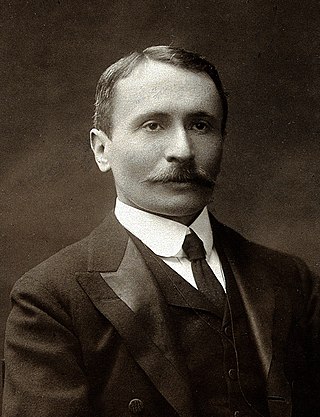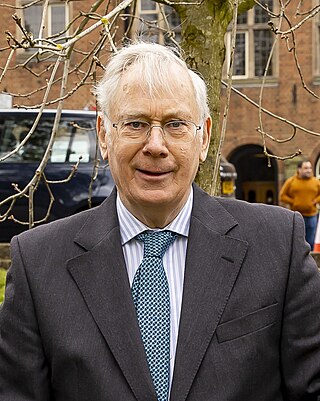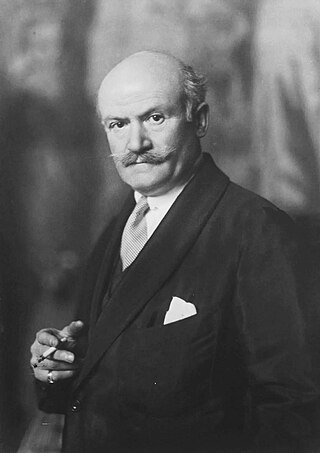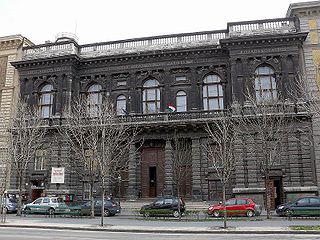
Sir Marc Aurel Stein, (Hungarian: Stein Márk Aurél; 26 November 1862 – 26 October 1943) was a Hungarian-born British archaeologist, primarily known for his explorations and archaeological discoveries in Central Asia. He was also a professor at Indian universities.

Arundel Castle is a restored and remodelled medieval castle in Arundel, West Sussex, England. It was established by Roger de Montgomery in the 11th century. The castle was damaged in the English Civil War and then restored in the 18th and early 19th centuries by Charles Howard, 11th Duke of Norfolk. Further restoration and embellishment was undertaken from the 1890s by Charles Alban Buckler for the 15th Duke.

Prince Edward, Duke of Edinburgh is a member of the British royal family. He is the youngest child of Queen Elizabeth II and Prince Philip, Duke of Edinburgh, and the youngest sibling of King Charles III. He was born 3rd in the line of succession to the British throne and is now 14th.

Prince Richard, Duke of Gloucester is a member of the British royal family. He is the second son of Prince Henry, Duke of Gloucester, and Princess Alice, Duchess of Gloucester, the youngest of the nine grandchildren of George V, nephew of Edward VIII and George VI, and first cousin of Elizabeth II. He is 31st in the line of succession to the British throne, and the highest person on the list who is not a descendant of George VI. At the time of his birth, he was 5th in line to the throne.

Francis, Duke of Teck, known as Count Francis von Hohenstein until 1863, was an Austrian-born nobleman who married into the British royal family. His wife, Princess Mary Adelaide of Cambridge, was a first cousin of Queen Victoria. He was the father of Queen Mary, the consort of King George V. Francis held the Austrian title of Count of Hohenstein, and the German titles of Prince (Fürst) and later Duke of Teck, and was given the style of Serene Highness in 1863. He was granted the British style of Highness in 1887.

Alexander Cambridge, 1st Earl of Athlone, was a member of the extended British royal family, as a great-grandson of King George III, a brother of Queen Mary, uncle to the Kings Edward VIII and George VI, and the husband of Princess Alice of Albany. He was a British Army commander, who served as Governor-General of the Union of South Africa and Governor General of Canada.

Philip Alexius László de Lombos, known professionally as Philip de László, was an Anglo-Hungarian painter known particularly for his portraits of royal and aristocratic personages. In 1900, he married the Anglo-Irish socialite Lucy Guinness, and he became a British subject in 1914. László's patrons awarded him numerous honours and medals. He was invested with the Royal Victorian Order by Edward VII in 1909 and, in 1912, he was ennobled by Franz Joseph I of Austria; becoming a part of the Hungarian nobility.

Edward William Fitzalan-Howard, 18th Duke of Norfolk,, styled Earl of Arundel between 1975 and 2002, is a British peer who holds the hereditary office of Earl Marshal and, as Duke of Norfolk, is the most senior peer in the peerage of England. He is also the titular head of the House of Howard.
A cyclorama is a panoramic image on the inside of a cylindrical platform, designed to give viewers standing in the middle of the cylinder a 360° view, and also a building designed to show a panoramic image. The intended effect is to make viewers, surrounded by the panoramic image, feel as if they were standing in the midst of the place depicted in the image.

Earls Court Exhibition Centre was a major international exhibition and events venue in London, England. At its peak it is said to have generated a £2 billion turnover for the economy. It replaced exhibition and entertainment grounds, originally opened in 1887, with an art moderne structure built between 1935 and 1937 by specialist American architect C. Howard Crane. With the active support of London mayor Boris Johnson, in an attempt to create Europe's "largest regeneration scheme", its proposed heritage listing was refused after it was acquired by developers, who promptly in 2008 applied for and were granted a Certificate of Immunity from Listing by English Heritage, and its demolition was completed in 2017.

The Hungarian University of Fine Arts is the central Hungarian art school in Budapest, Andrássy Avenue. It was founded in 1871 as the Hungarian Royal Drawing School (Magyar Királyi Mintarajztanoda) and has been called University of Fine Arts since 2001.
Football is the most popular sport in Hungary. The Hungarian Football Federation is the highest body of professional football in Hungary and was founded in 1901. The Hungary national team has played in numerous international tournaments, including the inaugural football tournament in the Olympic Games, nine World Cups, and four European Championships. Their greatest achievements are the three gold medals in the 1952, 1964 and 1968 Olympic Games, and the runner-up in the 1938 and 1954 World Cups. The team known as the Mighty Magyars was also the first non-British team to defeat England, 6–3 at Wembley in 1953. Months later, they defeated the English by a convincing 7–1 in Budapest in 1954, the worst defeat in the history of the English team.
Joseph Grego was an art collector and exhibitor, author and journalist, inventor and graphics expert.
The Arrival of the Hungarians is a large cyclorama – a circular panoramic painting – by Hungarian painter Árpád Feszty and his assistants, depicting the beginning of the Hungarian conquest of the Carpathian Basin in 895.

The Ópusztaszer National Heritage Park is an open-air museum of Hungarian history in Ópusztaszer, Hungary. It was established in 1982 and is most famous for being the location of the Feszty Panorama, a cyclorama by Árpád Feszty and his assistants, depicting the beginning of the Hungarian conquest of the Carpathian Basin in 895. The painting was completed in 1894 for the 1000th anniversary of the event. The park is also home to various indoor and outdoor exhibits, focusing on the archaeological and ethnographic history of ancient and early-modern Hungary in an immersive and engaging manner.
Stephen Estaban Kelen OAM was a Hungarian-Australian sportsman, journalist, author, and playwright. He won seven gold medals at the World Table Tennis Championships in the 1920s and 1930s. After moving to Australia in 1939 he had a long writing career in English.

Zsófia Kovács is a Hungarian artistic gymnast who competed at the 2016 and 2020 Olympic Games. She is the 2017 and 2023 European all-around silver medalist, the 2020 European champion on uneven bars, as well as the 2020 and 2022 European champion on vault.

Olga Máté was one of the first women Hungarian photographers, most known for her portraits. She was known for her lighting techniques and used lighted backgrounds to enhance her portraits and still life compositions. In 1912 she won a gold medal in Stuttgart at an international photography exhibit. Perhaps her best-known images are portraits she took of Mihály Babits and Margit Kaffka. She was also an early suffragist in Hungary and during the Hungarian White Terror assisted several intellectuals in their escapes.
The Devonshire House Ball or the Devonshire House Fancy Dress Ball was an elaborate fancy dress ball, hosted by the Duke and Duchess of Devonshire, held on 2 July 1897 at Devonshire House in Piccadilly to celebrate the Diamond Jubilee of Queen Victoria. Due to the many prominent royals, aristocrats, and society figures who attended as well as the overall lavishness of the ball, it was considered the event of the 1897 London Season.

Royal tours of Saint Lucia by its royal family have been taking place since the 20th century. Elizabeth II, Queen of Saint Lucia, visited the country twice; in 1966, and 1985.















